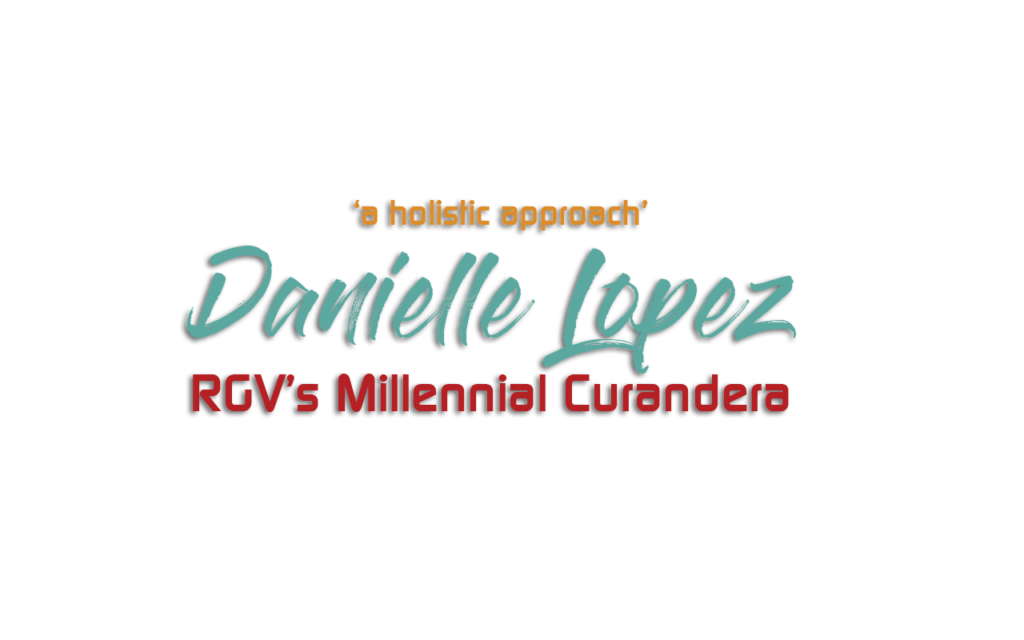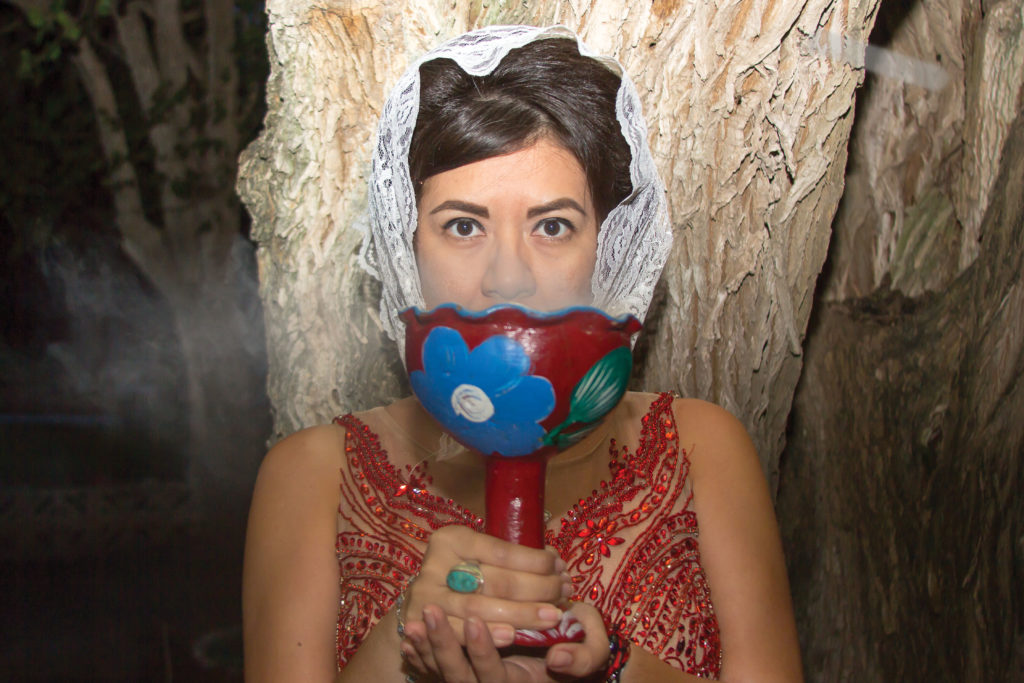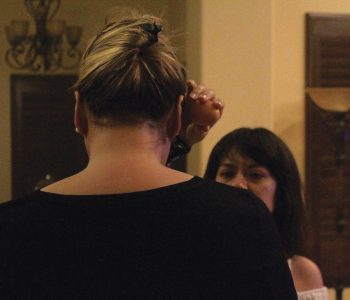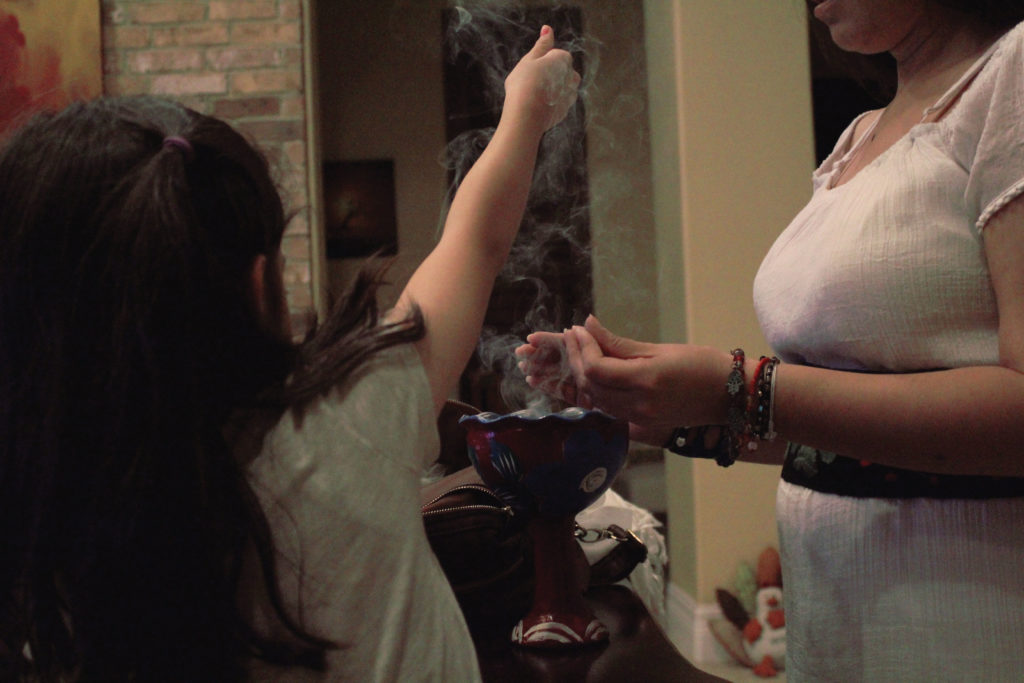

By: J. Eduard Moreno
Photography: Arael Meza
The 33-year-old is a full-time curandera, which directly translates to “one who heals.” She goes by several titles such as healer, “Bruja,” and her favorite, “Curandera Barbie.” Curanderismo is a form of Mexican folk medicine, but you may recognize it by its more commonly and naively used alias: brujeria (witchcraft).
From rubbing an egg across your body to check for mal ojo, the evil eye, to prescribing herbs for common illnesses, López said she provides services to those who prefer a holistic approach towards health care. Those she treats vary widely in age, ethnicity and even species.
With no formal medical training, everything she’s learned has been passed down by matriarchs in her family. During gatherings, the older women in her family noticed her unbound curiosity and would lure her in with a “mijita vente pa’ca” (sweetie come here), while the other children continued playing. This was probably the same tactic their predecessors used, and it was ultimately how López learned most of what she knows about healing. An ever-curious being, she said she continued to seek information about healing through books, school and talking to other healers.
She received her bachelors in English and a masters in multidisciplinary studies with a concentration in Mexican American studies at the University of Texas-Pan American. While earning her master’s, she said she took a special interest in medical anthropology, studying the history and mechanisms of the medicine she and her family had practiced for generations. Around the same time, she realized that her skills weren’t as ordinary as she thought. López added that she also became subject to the stigma that surrounded holistic medicine once she began practicing it outside of her family.
“When I was younger, I thought everybody in the Valley did this [brujeria],” the Pharr native said. “We come from a generation where we trust biomedicine completely. We grew up knowing that we had to get certain immunizations by a certain time so you can go to school… you’re kind of following a regimen, so you just trust biomedicine. But also, relying too much on it, we can forget how we can have a hands-on approach toward our medicine.”

The history behind curanderismo, and folk medicine in general, can be looked at as an ancient, ongoing and oftentimes forced conversation between cultures. Before the creation of biomedicine, the scientific and research-based approach to healthcare, every culture had its own form of treating ailments using the resources around them. In the border regions of the United States, that exchange can be traced back to pre-colonial time periods in the Americas, Europe and Africa.
“In Spain, the Moors and Sephardic Jews brought much of their folk medicine to the Iberian peninsula,” López explained. “Then, during Spanish colonialism, much of that was brought over and mixed with the pre-existing Indigenous medicine… There’s even a huge library on herbal medicine that already existed with the Mayans and the Aztecs.”
As time, technology and scientific based healthcare progressed, the number of holistic medicine practitioners began to decrease. The road hasn’t ever been easy for those practicing folk medicine. Traditionally, women who practiced folk medicine (shamans, midwives, etc.) were often labeled as witches. The word actually translates to “wise woman” in old English, though, as rings true today, wise women are often met with resentment.
In fact, the negative connotation attached to the word “witch” can be attributed to the acts of several institutions across history, namely the Catholic Church. In the 15th century, Pope Innocent VIII accredited a book called Malleus Maleficarum (The Witches Hammer), which guided followers of the church in identifying characteristics of a witch.
Often, an accusation was enough for a woman to be considered a witch and consequently burned at the stake. Throughout the 250 years that the inquisition lasted, it claimed the lives of between 600,000 to 9,000,000 people, most of whom were women of marginalized minority groups.
“The easiest way to discredit a woman was by calling her a witch,” said Servando Hinojosa, an anthropology professor at The University of Texas Rio Grande Valley.
Hinojosa’s work is focused on medical anthropology and folk medicine of southern Mexico and Central America. He said in recent years, since the establishment of formal medical institutions in the 20th century, there have been many attempts to discredit competing paradigms of care.
In today’s healthcare system, fewer people have access to the services they need and those who do are often unsatisfied with the results. Even with insurance, an appointment at the doctor’s can leave a patient waiting hours to receive a sped-up version of the care they were looking for.
“That may leave people feeling like they aren’t being regarded as whole individuals when they approach the physicians,” Hinojosa said. “People feel that they are more than their symptoms and they may feel that the medical establishment sees them more as a compilation of symptoms than as individuals who need broader approaches to care. Under those conditions, it stands to reason that there may be a segment of the public that may have the means to look at other options in addition to what they’re utilizing now.”
Ultimately, what López and other healers would like to see is a middle ground where folk healers and physicians can work together to treat illnesses holistically. The idea of integrative medicine in practice is quite uncertain and unexplored. In her own practice, López encourages her patients to let their doctors know that they’re seeing her. This allows her to share notes and collaborate with physicians if desired. Some hospitals and clinics have pioneered a similar ideology, but it has often received mixed results.
“They (employed folk healers) are not allowed to speak outside of certain parameters. They are told when to go, when they can’t. They’re told they’re doing this as a volunteer when everybody else is getting paid a big salary or that they can only take their advice so long as it aligns with what the physician is saying. If not, then it’s not relevant,” Hinojosa said. “Allopathic medicine continues to set the terms in which such an engagement happens and it never favors the person who is not a clinician. So, I still think there can be more respect shown between different classes of practitioners.”
Allopathic medicine is the mainstream blanket treatment of ailments through drugs and surgeries. Holistic medicine on the other hand looks at treating the underlying cause of symptoms and the overall health rather than suppressing the symptoms as seen in an allopathic approach.
Like an early 20th century doctor, López takes plenty of house calls. She thinks of her patients more as family and refers to them as her “godchildren.”
“I go to them, because people can’t usually make it to me because of their schedule,” López said, adding that that’s typically what prompts her visit in the first place–stress-induced ailments.
Her most surprising demographic is college students, she explained. They usually ask for a “barrida” (sweeping) to help relieve stress and identify mal ojo. She rubs them with an egg meant to soak up the bad energy, cracks it in a glass of water, and then observes the characteristics of the finished product.
College can be particularly daunting for first-generation college students, which can indirectly cause physical or mental discomforts, she said. She’s also seen students from Mexico, other parts of Texas and around the world.
“You go through a lot of what we call imposter syndrome when you’re a first-generation college student,” she said. “Where you’re going through the motions and the stresses of it and especially during midterms or finals, you start having these thoughts of ‘Woah, can I accomplish all of this?’… A lot of students aren’t told enough that their education is a personal journey to being the best version of themselves. Giving into imposter syndrome or feeding too much into it can be disastrous. I try to build their confidence, mark their milestones and most importantly, help them adopt their own regimen of self-care. It’s good to keep up with self-care because when you don’t that’s when you might start with self-destructive habits. Students often get dependent on different drugs, toxic relationships and unhealthy lifestyles.”
López said she once helped cure a cancer patient who was told she needed to make funeral arrangements. “They told her she was going to have six to seven months to live,” López said. “She had a really aggressive cancer. When I met her, they had already decided that they were going to do away with chemo because it was really aggressive and they wanted something more holistic. When we would meet we spent most of the time just talking… she was just
letting go of this disappointment that she had devoted so much time to her work and didn’t devote a lot to her dreams. So once she released that disappointment we began to see her own empowerment. She began assessing her diet… She totally quit sugar, and as soon as she did the cancer started dying… So it was a mixture of the platicas and her holistic diet … She just had her one year anniversary of being in remission… It was a really integrative process, because she was still seeing her doctor while she was seeing me.”
Communication is also an integral part of López’s work. Sometimes patients have to communicate with her in different ways. She said pets often have the most organic reactions to her work, but she had never experienced anything as directly as a case she had with one very special pup.
“I went to this home… I’m about two or three blocks away from the house and my throat starts killing me… It felt like somebody was choking me, like a crushing feeling and I started panicking because when I do the house blessing I have to sing,” she said. “Then I was like ‘No, this is supposed to tell me something.’ So when I got to the house, I realized it wasn’t for the woman who called me. It was for her dog who had gotten diagnosed with throat cancer. So somehow he knew that I was coming, and I feel like he let me feel what he was feeling… Because as soon I saw him–this beautiful elderly pug–I pet him and I picked him up and he just lay his head on my shoulder and let me pet his neck… [Now] he is doing well but is still getting monitored for full remission.”
“A good witch is not supposed to mess with the natural order,” she said. “But, I have done it on at least two cases for immigration. I did what they call ‘works’ or trabajos where I pray that their appeal case gets heard and they don’t get deported. I had one family where it went to their head and the gentlemen in that family didn’t get deported. But him and his wife got involved with selling drugs… The other family, the son didn’t get deported. He went and he got a small job and he started the DACA process so he’s going to finish that and finish school… I learned my lesson with those two different outcomes and now I just stick to white.”


One family sought López’s help for their 5-year-old daughter, who experienced susto (fright) after being in a car accident. Like many children, she battles with frequent nightmares. When López entered their home in Edinburg, she said she was greeted with excitement by the young girl who couldn’t wait for the house to be blessed. She enjoyed every part of the process, especially the setup.
The little girl rests her head on López’s lap while playing games on her iPad, patiently waiting for López and her mother to finish small talk so the fun can begin. Her mother tells her to lower the volume on her device. She refuses.
She wasn’t initially so comfortable with López. The first time they met, she stared at her with disbelief, speechless for several minutes.
“She’s like a curandera barbie,” she murmured to her mother, whose leg she was hiding behind.
Her mother, Mary, asked for her and her family to remain anonymous because she is in the process of selling her home. She had trouble selling her last home after buyers saw her candles, incense and relics and decided not to purchase the home out of fear.
Mary does recall her family treating her with folk medicine at a young age, but “as she got older, those conversations got washed away,” an experience shared by many in the Valley.
Mary first met López at a platica she hosted at Hinovations Art Gallery in McAllen. When a friend first invited her to an event, she was reluctant, but now she calls López a few times a month for house blessings, limpias, barridas or even just to talk and share food.
“I call her for protection,” she said.
López has helped her daughter combat nightmares and helps keep the house blessed and clear of bad energies.
To close off her visit, López and her assistant light the copal-scented incense and makes sure to bless all of the doors and windows in the home.